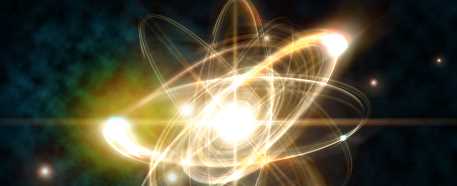Quantum mechanics, a branch of physics that emerged in the early 20th century, revolutionized our understanding of the microscopic world. It delves into the peculiar behaviors of subatomic particles and challenges our classical intuition. In this blog post, we will explore the fundamentals of quantum mechanics, the strange phenomena it reveals, and its implications for our understanding of the universe.
The Quantum Revolution
The birth of quantum mechanics was a response to the limitations of classical physics in explaining phenomena at the atomic and subatomic scales. Scientists such as Max Planck, Albert Einstein, Niels Bohr, Werner Heisenberg, Erwin Schrödinger, and others made groundbreaking contributions to the development of this revolutionary theory.
Quantum Superposition and Wave-Particle Duality
One of the fundamental concepts in quantum mechanics is the principle of superposition. According to this principle, subatomic particles can exist in multiple states simultaneously. This means that until an observation is made, a particle can be in a state of both being and not being in a particular state.
Wave-particle duality is another bizarre aspect of quantum mechanics. It states that particles, such as electrons and photons, can exhibit both wave-like and particle-like behavior depending on the experiment. This duality challenges our classical understanding of matter and light, blurring the line between particles and waves.
Uncertainty Principle and Heisenberg's Uncertainty Principle
Heisenberg's uncertainty principle is a fundamental concept in quantum mechanics that states that the more precisely we know the position of a particle, the less precisely we can know its momentum, and vice versa. This principle introduces a fundamental limit to the accuracy of simultaneous measurements of certain properties of a particle.
Quantum Entanglement and Spooky Action at a Distance
Quantum entanglement is a phenomenon in which two or more particles become connected in such a way that the state of one particle is instantly correlated with the state of the other, regardless of the distance between them. This "spooky action at a distance," as Einstein called it, challenges our intuitive notions of causality and suggests that information can travel faster than the speed of light.
Applications of Quantum Mechanics
Quantum mechanics has not only deepened our understanding of the fundamental nature of reality but also found practical applications in various fields. Quantum computing, for example, harnesses the unique properties of quantum systems to perform complex calculations exponentially faster than classical computers. This has the potential to revolutionize fields such as cryptography, optimization, and drug discovery.
Quantum mechanics also plays a crucial role in modern technologies such as lasers, transistors, and atomic clocks. It underlies the principles behind scanning tunneling microscopes and electron microscopes, enabling us to observe and manipulate matter at the atomic level.
The Quantum Universe and Future Discoveries
Quantum mechanics provides a framework for understanding the behavior of subatomic particles and the building blocks of the universe. It is the foundation of the Standard Model of particle physics, which describes the fundamental particles and forces in the universe.
However, there are still mysteries yet to be unraveled. Quantum gravity, for instance, seeks to reconcile the principles of quantum mechanics with the theory of general relativity to explain the behavior of gravity at the quantum level.
Conclusion
Quantum mechanics has revealed a bizarre and fascinating world at the subatomic scale. It challenges our classical intuition, introducing concepts such as superposition, wave-particle duality, uncertainty, and entanglement. While the theory itself may seem strange and counterintuitive, its applications have transformed technology and have the potential to revolutionize various fields.




Leave Comment